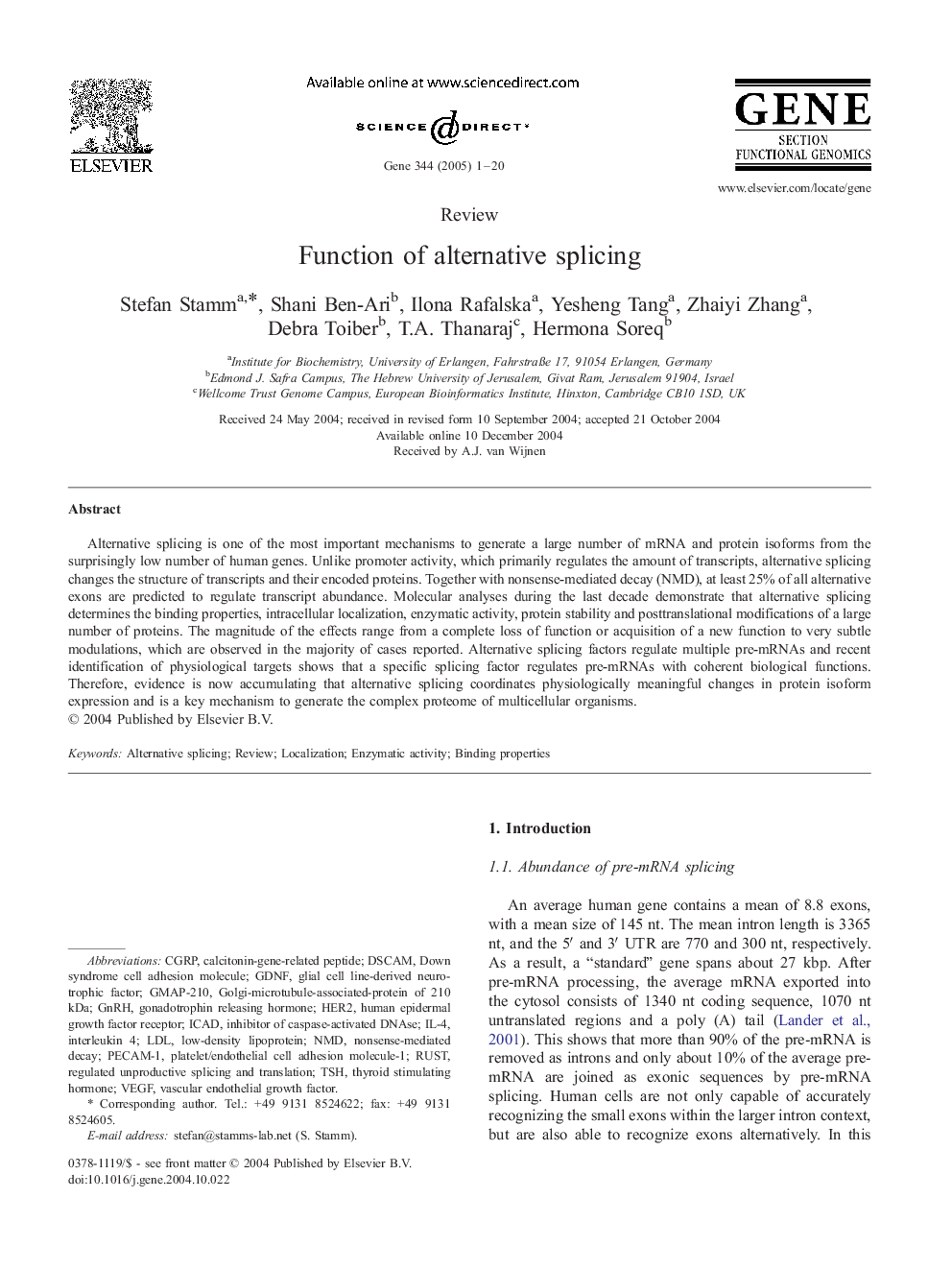| کد مقاله | کد نشریه | سال انتشار | مقاله انگلیسی | نسخه تمام متن |
|---|---|---|---|---|
| 9127337 | 1569976 | 2005 | 20 صفحه PDF | دانلود رایگان |
عنوان انگلیسی مقاله ISI
Function of alternative splicing
دانلود مقاله + سفارش ترجمه
دانلود مقاله ISI انگلیسی
رایگان برای ایرانیان
کلمات کلیدی
HER2ICADDSCAMNMDGDNFCGRPPECAM-1TSHIL-4GnRHinhibitor of caspase-activated DNaseInterleukin 4 - اینترلوکین 4Localization - بومی سازیAlternative splicing - جابجایی جایگزینBinding properties - خواص اتصالRust - زنگVascular endothelial growth factor - فاکتور رشد اندوتلیال عروقیVascular Endothelial Growth Factor (VEGF) - فاکتور رشد اندوتلیال عروقی (VEGF)Glial cell line-derived neurotrophic factor - فاکتور نوروتروفی مشتق از سلول گلیاییNonsense-mediated decay - فساد ادعایی بی معنیEnzymatic activity - فعالیت آنزیمیLow-density lipoprotein - لیپوپروتئین کم چگالی یا الدیال LDL - لیپوپروتئین کم چگالی(کلسترول بد)Review - مرورDown syndrome cell adhesion molecule - مولکول چسبندگی سلول سندرم داونgonadotrophin releasing hormone - هورمون آزاد کننده گنادوتروپینthyroid stimulating hormone - هورمون محرک تیروئیدcalcitonin-gene-related peptide - پپتید مرتبط با ژن calcitoninhuman epidermal growth factor receptor - گیرنده عامل فاکتور رشد اپیدرمی انسان
موضوعات مرتبط
علوم زیستی و بیوفناوری
بیوشیمی، ژنتیک و زیست شناسی مولکولی
ژنتیک
پیش نمایش صفحه اول مقاله

چکیده انگلیسی
Alternative splicing is one of the most important mechanisms to generate a large number of mRNA and protein isoforms from the surprisingly low number of human genes. Unlike promoter activity, which primarily regulates the amount of transcripts, alternative splicing changes the structure of transcripts and their encoded proteins. Together with nonsense-mediated decay (NMD), at least 25% of all alternative exons are predicted to regulate transcript abundance. Molecular analyses during the last decade demonstrate that alternative splicing determines the binding properties, intracellular localization, enzymatic activity, protein stability and posttranslational modifications of a large number of proteins. The magnitude of the effects range from a complete loss of function or acquisition of a new function to very subtle modulations, which are observed in the majority of cases reported. Alternative splicing factors regulate multiple pre-mRNAs and recent identification of physiological targets shows that a specific splicing factor regulates pre-mRNAs with coherent biological functions. Therefore, evidence is now accumulating that alternative splicing coordinates physiologically meaningful changes in protein isoform expression and is a key mechanism to generate the complex proteome of multicellular organisms.
ناشر
Database: Elsevier - ScienceDirect (ساینس دایرکت)
Journal: Gene - Volume 344, 3 January 2005, Pages 1-20
Journal: Gene - Volume 344, 3 January 2005, Pages 1-20
نویسندگان
Stefan Stamm, Shani Ben-Ari, Ilona Rafalska, Yesheng Tang, Zhaiyi Zhang, Debra Toiber, T.A. Thanaraj, Hermona Soreq,